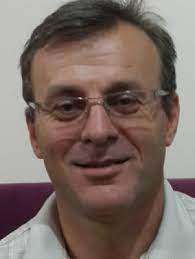Filters
Filters
Found: 42 Piece 0.000 snCollection [1]
Researchers [3]
Faculty / Institute [1]
Publication type [2]
Language [1]
Source [20]
- IEEE Industry Applications Society Annual Meeting 6
- IEEE Transactions on Industry Applications 5
- IEEE Transactions on Antennas and Propagation 3
- Measurement 3
- 2023 IEEE Photonics Conference (IPC) 2
- APL Materials 2
- Electric Power Systems Research 2
- IEEE Transactions on Instrumentation and Measurement 2
- IET Generation, Transmission & Distribution 2
- Waves in Random and Complex Media 2
- 2020 28th Signal Processing and Communications Applications Conference (SIU) 1
- ACS Applied Materials & Interfaces 1
- Advanced Theory and Simulations 1
- Electric Power Components and Systems 1
- IEEE International Conference on Multisensor Fusion and Integration for Intelligent Systems 1
- IEEE Microwave and Wireless Components Letters 1
- IEEE Transactions on Geoscience and Remote Sensing 1
- IEEE Transactions on Microwave Theory and Techniques 1
- Journal of Physics D: Applied Physics 1
- Nanomaterials 1 More less
Databases [12]
Index Type [4]
Publisher [10]
Department [1]
National/International [1]
Subject Headings [20]
- harmonic analysis 7
- power quality 7
- electric arc furnace (EAF) 6
- active power filter (APF) 5
- deep learning (DL) 4
- electrical power quality 4
- harmonics 4
- interharmonics 4
- electric arc furnace 3
- free-space 3
- inverse design 3
- multiple synchronous reference frame (MSRF) 3
- point of common coupling 3
- time-domain analysis 3
- active power filter 2
- butterworth filter 2
- calibration 2
- complex permittivity 2
- convolutional neural network 2
- convolutional neural networks (CNN) 2 More less
 Özgül SALOR-DURNA
Özgül SALOR-DURNA Mehmet ERTUĞRUL
Mehmet ERTUĞRUL

